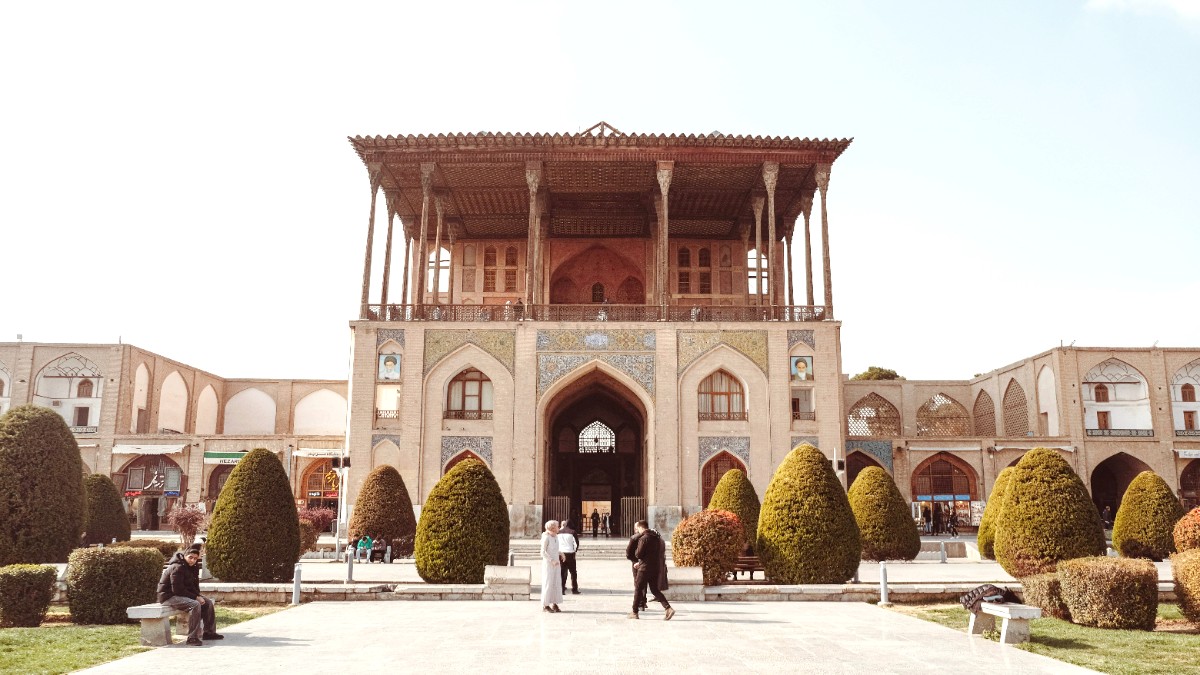
Central Iran, Iran
Explore Esfahan's celebrated historical sites.
Naqsh-e Jahan Square (Imam Square): One of the largest city squares in the world. Shah Abbas I constructed it in the early 17th century as the center of his new capital.
Early Mornings: The time for avoiding crowds at popular sites around Naqsh-e Jahan Square.
While Esfahan itself is a living city, the Jameh Mosque's foundations date back to the 8th century, with layers of older construction beneath.
A unique Seljuk-era cylindrical brick tower, a short distance from the city center, offering historical intrigue.
A historic public bathhouse, now a museum, bringing a glimpse into traditional Iranian communal life and architecture.
Beyond the main square, Esfahan presents museums and cultural institutions that bring insights into its rich heritage.
A UNESCO World Heritage site, this royal pavilion resides within a vast Persian Garden. Its interior is famous for large frescoes depicting historical battles and courtly life, and its mirrored hall.
A private museum displaying traditional Persian musical instruments. It often features live performances by musicians, delivering a sensory experience of Iranian culture.
Many small workshops exist around Naqsh-e Jahan Square and within the bazaar. These display traditional crafts like miniature painting, enamel work (minakari), and block printing (ghalamkari). You may observe artisans at work and sometimes participate in short demonstrations.
Esfahan has several smaller private art galleries, notably in the Jolfa neighborhood, featuring contemporary Iranian art.
Traditional tea houses (Chai Khaneh) often serve as informal cultural centers, sometimes hosting poetry readings or traditional music sessions.
Check local listings or ask your hotel about any temporary exhibits or cultural programs during your visit.
A vast, historic covered market that served as the city's commercial heart for centuries.
A historic Christian neighborhood established by Shah Abbas I. It presents a distinct atmosphere with its churches, cafes, and residential architecture.
A UNESCO World Heritage site. This mosque is an architectural masterpiece representing over 12 centuries of continuous construction and renovation.
While famous for its architecture, Esfahan also features green spaces and scenic viewpoints.
A beautiful example of a Persian Garden, also an UNESCO site. It brings a peaceful setting for a stroll around the palace.
A large recreational area on the western side of the city. It includes a bird garden and an aquarium, presenting a relaxed escape from the city bustle.
Presents panoramic views of Esfahan from its summit. Accessible by cable car or hiking trails. The view, especially at sunset, brings a sweeping perspective of the sprawling city.
Houses various bird species in an aviary setting, located within Nazhvan Forest Park.
The river flowing through Esfahan, famous for its historic bridges. While frequently dry, the riverbed and bridges remain significant social and historical landmarks.
Offer unique geological formations, including sand dunes and salt lakes (for example, near Varzaneh).
Discover sites less frequented by tourists but rich in history and culture.
Experience unique local spots and regional highlights.
The quiet courtyards of traditional houses, the intricate details inside the Sheikh Lotfollah Mosque (at different times of day), and the reflection pools at Chehel Sotoun Palace offer distinct photographic opportunities.
Seek out the small, bustling workshops within the Grand Bazaar for candid shots of artisans at work.
A beautiful example of a Persian Garden, also an UNESCO site. It brings a peaceful setting for a stroll around the palace.
A large recreational area on the western side of the city. It includes a bird garden and an aquarium, presenting a relaxed escape from the city bustle.
Presents panoramic views of Esfahan from its summit. Accessible by cable car or hiking trails. The view, especially at sunset, brings a sweeping perspective of the sprawling city.
Houses various bird species in an aviary setting, located within Nazhvan Forest Park.
The river flowing through Esfahan, famous for its historic bridges. While frequently dry, the riverbed and bridges remain significant social and historical landmarks.
The Jameh Mosque's foundations date back to the 8th century, with layers of older construction beneath.
Vank Cathedral in Jolfa is famous for its elaborate frescoes and museum.
The Palace of Hasht Behesht and Toghrol Tower are hidden gems worth exploring.
Explore off-the-beaten-path attractions for a different perspective.
Discover unique experiences in the region surrounding Esfahan.
Capture unique photo angles around Naqsh-e Jahan Square early morning.
Seek out bustling workshops in the Grand Bazaar for candid shots of artisans at work.